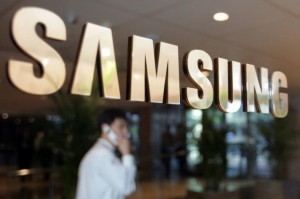 The heads of four divisions and functions at Samsung India have quit over the past month as the country’s largest consumer electronics and cellphone maker reorganizes itself under new president HyunChil Hong.
The heads of four divisions and functions at Samsung India have quit over the past month as the country’s largest consumer electronics and cellphone maker reorganizes itself under new president HyunChil Hong.
Hong, who replaced the company’s long-serving CEO BD Park four months ago with a clear mandate to cut flab and accelerate growth, is merging marketing functions such as those related to product advertising and below-the-line marketing activities with the sales team to ensure better coordination.
A majority of the employees in the corporate marketing team will get aligned with the product sales team while some will continue in their existing role to handle corporate brand and media buying.
The cellphone maker also plans to merge its tablet sales team and mobile phone application and content development business with its smartphone business, which may lead to some more exits in the days to come, said industry executives.
Jagbir Singh, VP of the networks business, is likely to move to Reliance Jio. Incidentally, Samsung is erecting more than 1 lakh base stations for Reliance Jio’s upcoming 4G services. An email sent to Reliance Jio on the appointment of Singh did not elicit any response by press time.
Tarun Malik, director and head of digital content, cloud and media solution centre, which builds applications and develops content for Samsung’s smartphones and smart televisions, has resigned. Sachin Thapar, director for the tablets business, quit three weeks ago and joined an American smartphone startup InFocus Mobiles as its India head.
Sandeep Bhushan, who was director, go-to-market strategy, of the mobile phone business, has also resigned. A Samsung India spokesperson said the company had built a solid foundation in the Indian market because of an exemplary talent pool.
“In 20 years, we have grown into a family of 45,000 employees, of which over 22,000 are direct employees. During this journey, as is with many other growing companies, some employees have moved on to take up opportunities elsewhere or pursue their own interests,” the spokesperson said. The Samsung India spokesperson added that there has been no major restructuring of the business in India.
Departures prompted by rejigs
But industry executives said the departures were prompted by the reorganization. While some have left because their roles were substantially reduced, others were unhappy with the organizational changes.
A senior industry executive, who didn’t want to be named, said Hong had taken charge of Indian operations at a critical time with Samsung’s smartphone business under pressure globally and revenue growth in India in 2014-15 having slowed by more than half over the previous fiscal. Samsung India sales grew 45% to Rs 40,392 crore in 2013-14. Most of Hong’s initiatives are centred around the company’s smartphone business, which accounts for almost 70% of revenues.
“Hong is re-organizing the Indian operations and tough calls are being taken. He is a thorough sales professional. There is a lot of emphasis on cutting costs and driving profit,” the executive said.
The chief executive of a leading electronics retailer said some of the changes introduced by Hong are becoming evident. The recent launch of Galaxy S6 and S6 Edge was more subdued than previous debuts.
“The hype is lower than what Samsung had done with Galaxy S4 and Galaxy S5, even though these two upcoming models are vital to its success,” he said. Samsung remains the market leader in the Indian smartphone segment, according to top market researcher IDC, but its lead in the October-December period has shrunk from the year ago. The South Korean company, however, contests this and says its share by value is four times the No. 2 and more than double by volume.
Hong Kong-based Counterpoint Research’s Senior Analyst Tarun Pathak said Samsung has lost more market share in the mid-level price band of $100-200 compared with any other range due to the Chinese brands. “This is the real challenge as they have to recover and get back to the volumes they were doing earlier,” he said.






